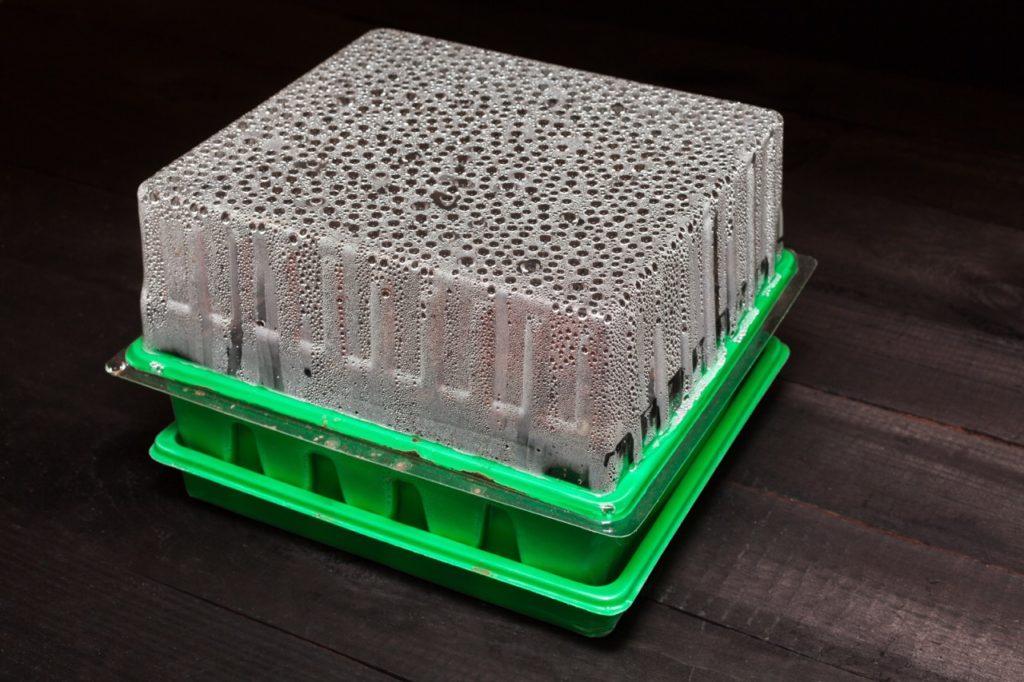Growing Bamboo From Seed Is A Tricky Process – Try These 8 Steps To Improve Your Chances

PERENNIALS > BAMBOO > SOWING
Chris is a gardening writer and nature enthusiast. He graduated from Oxford Brookes University in 2022 with an MA in Psychology. Chris works with the Leeds Green Action Society, helping their food cooperative by growing various fruit and vegetables on their two allotments in Hyde Park, Leeds.
Reviewed By COLIN SKELLY

Colin is a Horticulturist and Horticultural Consultant with experience in a range of practical and managerial roles across heritage, commercial and public horticulture. He holds the Royal Horticultural Society’s Master of Horticulture award and has a particular interest in horticultural ecology and naturalistic planting for habitat and climate resilience.
IN THIS GUIDE
BAMBOO GUIDES
Container Growing
Division
Overwintering
Pruning
Removal
Root Barriers
Sowing
Varieties
Bamboo is the fastest-growing plant on earth and some varieties grow so quickly that you can sit and watch it happen!
It’s also a fascinating plant, with properties and aesthetic features that make it popular for many reasons.
Growing bamboo from seed is trickier than growing some other plants, especially in the UK, where our native climate varies quite a lot from the bamboo’s native region.
However, it is possible.

“Bamboo only flowers occasionally, so the seed is not very commonly available,” explains Colin Skelly, who has been awarded the Master of Horticulture status by the RHS.
“All the more reason, perhaps, to collect the seed and propagate them if your bamboo does flower, but it’s still probably not the easiest way to start growing them!”
Here’s a basic overview of the process when growing bamboo from seed:
- Prepare and moisten the compost in a seed tray or pots.
- Soak your bamboo seeds in water for roughly 24 hours.
- Sow your bamboo seeds, with a very thin layer of compost on top.
- Cover your seeds using a propagation tray or plastic bag.
- Wait for the bamboo seeds to germinate, typically within a few weeks.
- Transplant into pots after a month or so of growth.
- Move outside and slowly acclimatise to outdoor conditions.
- If growing a hardy outdoors variety, plant your bamboo out in the garden.
We’ll take a look at the process in more detail in the next sections.
| Difficulty | Medium |
| Equipment Required | Seeds, seed tray, compost, spray bottle, propagator (optional) |
| When To Sow | Early spring |
When To Sow Bamboo
Unlike many seeds you might grow in the UK, some bamboo varieties can’t spend their first autumn outdoors for the simple fact that they’ll be too weak to survive.

Inclement conditions in the UK mean that bamboo needs to be fully established before you can plant it out.
We recommend sowing in early spring and taking careful note of the requirements of the variety you’re growing.
1) Get Your Compost Ready
Bamboo will do well in general compost, so simply fill a seed tray with a layer of compost, then use your spray bottle to moisten the top layer.
2) Soak The Seeds
Bamboo seeds need to soak in room temperature water for 24 hours.

If the water is too hot, they’ll die, so err on the side of caution, as cool temperatures will only delay germination, rather than kill the seeds.
3) Sow Bamboo Seeds
Once your seeds have soaked, place them on top of your compost with about 1cm between each, then add another thin layer of compost (about 5mm) on top.
4) Cover Seeds
If you’re using a propagator, put your seed tray into it and leave it to get up to the required temperature, which is about 24°C.
If you don’t have a propagator, you can cover the seed tray with a plastic bag to increase temperature and humidity.

Use sticks to keep the bag elevated above the surface of the compost, and use an elastic band to keep it nestled tightly around the edge of the tray.
Put your tray or propagator in a spot where it will get some shade and not too much direct sun.
5) Await Germination
Now comes the waiting game and the time required is different between varieties.
You should expect germination to occur somewhere between 10-20 days.

At this step, it’s important to make sure that the plastic bag (if you’re using one) is elevated well away from the compost and seedlings.
6) Transplant Your Seedlings
After 30 days, it’s likely that all of the seeds that are going to sprout will have done.
Transplant the sprouted ones into small pots (about 5cm in diameter) using potting soil with some added mulch.

Ensure the neck of each seedling is level with the top of the soil in its container.
Keep each pot in a spot outdoors where they’ll get some shade.
7) Place Pots Outside
Bamboo seedlings will be ready to go outdoors out at different times.
Hardier species can spend their first winter outdoors, but they’ll need to stay in their pots and have some shelter, with mulch around their base as a bare minimum.

Less hardy species will most likely need to spend their first winter indoors in a greenhouse, along with occasional watering to keep them healthy.
8) Plant Hardy Types Outdoors
Seedlings that reach about 30cm in height are strong enough to survive the transition to life outdoors.

So if you’ve chosen a UK hardy variety, plant them out in your garden and enjoy them as they continue to grow!
